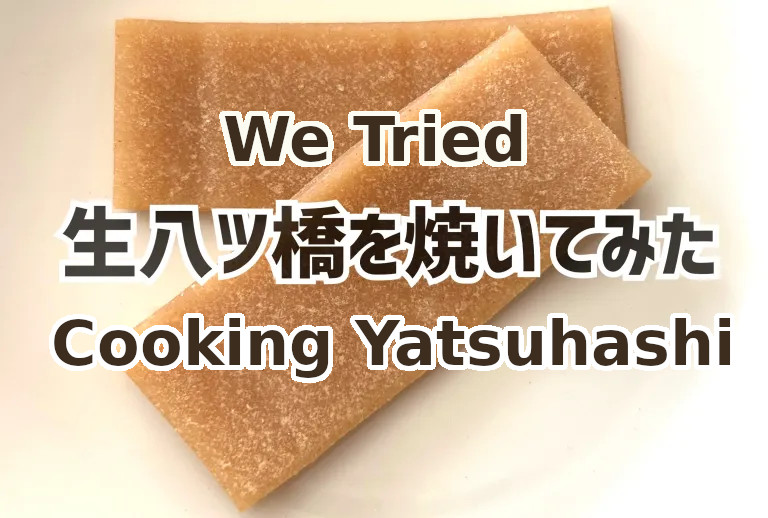
Can we recreate the baked version of yatsuhashi with different cooking methods?
When visiting Kyoto, there is one souvenir snack that just about everyone brings home to their friends and family: yatsuhashi. It’s a thin, flat sweet made of rice flour and folded over different fillings, though the most typical is red bean paste. There are actually three kinds of yatsuhashi, but the most popular kind you’ll find at most Kyoto souvenir shops is probably nama yatsuhashi, nama meaning “raw,” which is the soft, triangular version that’s similar to a thin mochi.
But did you know that it also comes in a hard-baked form? It’s a dough made from rice flour, sugar, and cinnamon that’s steamed and then baked into a hard rice cracker, and is actually considered the original version of yatsuhashi. We managed to find some to compare to nama yatsuhashi, and they have pretty much the same ingredients; both the hard and soft version from Shogoin Yatsuhashi, a popular brand, had sugar, rice flour, and kinako powder listed, though the hard version also had cinnamon.
▼ Top: the rice cracker-like yatsuhashi. Bottom: the mochi-like nama yatsuhashi.
So in essence, they’re the same product; just one is baked, and the other is not. That got our Japanese-language reporter K. Masami wondering…if she cooked the soft version of yatsuhashi, would it turn out the same as the baked kind you can find in stores? She decided to try it out.
Unfortunately, Masami doesn’t have an oven, so she had to try other methods at her disposal. First, she tried frying them in a pan. She let the pan warm up a bit before putting the soft strips inside. As they made a little crackling noise, the smell of cinnamon filled the room. Perhaps because they’re made with a lot of sugar, they began to brown almost immediately, which made evening out the cooking very difficult.
Masami couldn’t leave them in the pan for long, otherwise they’d burn, so she waited until they looked decently browned and the turned off the heat. After letting them cool, she touched one, but it was strangely still very soft.
It had firmed up a little bit, when she held it on one end, it was still very droopy, and thus had not achieved anywhere near the consistency of a rice cracker.
Maybe nama yatsuhashi is destined to stay soft forever? Just in case, Masami decided to try another cooking method: the grill of her gas stove.
Normally reserved for grilling fish, this little drawer is like a tiny broiler that cooks food with an overhead flame. Since it’s a much more direct heat, Masami assumed it would have a different result from cooking in the pan, but it turned out to be just as difficult to moderate the cooking process. Since the heat of the flames is rather strong, the nama yatsuhashi burned immediately even though she had the flame on the lowest setting.
It was a struggle to get them to cook evenly; even a short amount of time caused parts of them to burn. Masami watched carefully and somehow managed to get them to (mostly) brown slightly before quickly pulling them out of the grill.
After allowing them to cool, Masami picked one up and…to her surprise, it was firm! After the debacle that resulted from frying them in the pan, she didn’t think she would be able to firm them up, but somehow she did!
Of course, they hadn’t reached the same level of crispiness as market-produced, firm yatsuhashi. Those are hard as rice crackers, and would break if you dropped them on the floor. But this grilled nama-yatsuhashi was hard enough that she couldn’t twist it like she could with her pan-fried version.
It also had a nice crispy texture, so in Masami’s eyes, it seemed perfect. When she bit into it, however, she realized that, though it was crisp on the outside it was still soft and chewy on the inside, like nama yatsuhashi is supposed to be.
That wasn’t a bad thing. In fact, it was actually really tasty, and cooking it had leveled up its aroma, making it even more flavorful. Masami would recommend it if you’re looking for a different way to eat nama yatsuhashi. If you’re looking for the rice cracker-like, baked yatsuhashi, though, you’ll have to buy it from the store. It doesn’t seem like you can produce the same result by cooking nama yatsuhashi on its own. At least, not with a pan or a grill.
Still, Masami was glad she tried, because it helped her discover not only a new facet of the soft version of the famous Kyoto confectionary, but also that there are a lot more levels to each version of the snack than she initially thought. If you find yourself in Kyoto, definitely pick one or both versions up to give them a try! And if you’re not in Kyoto and suddenly craving some, you can get the same taste from the yatsuhashi gummy candy, which are available around the country.
Images © SoraNews24
● Want to hear about SoraNews24’s latest articles as soon as they’re published? Follow us on Facebook and Twitter!


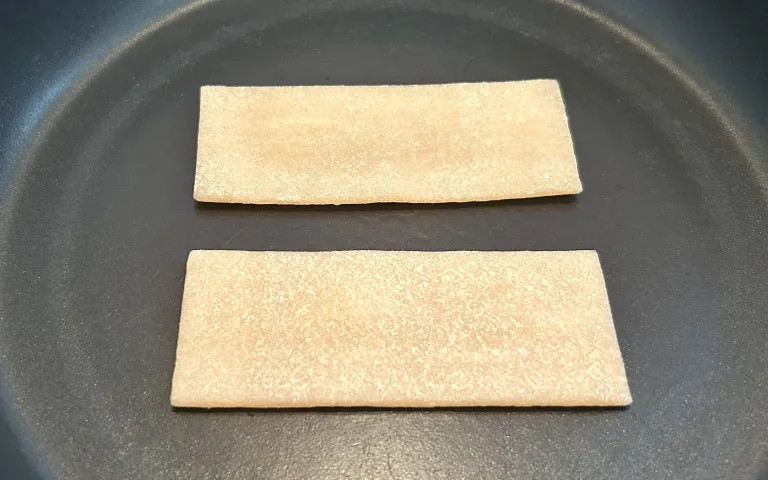
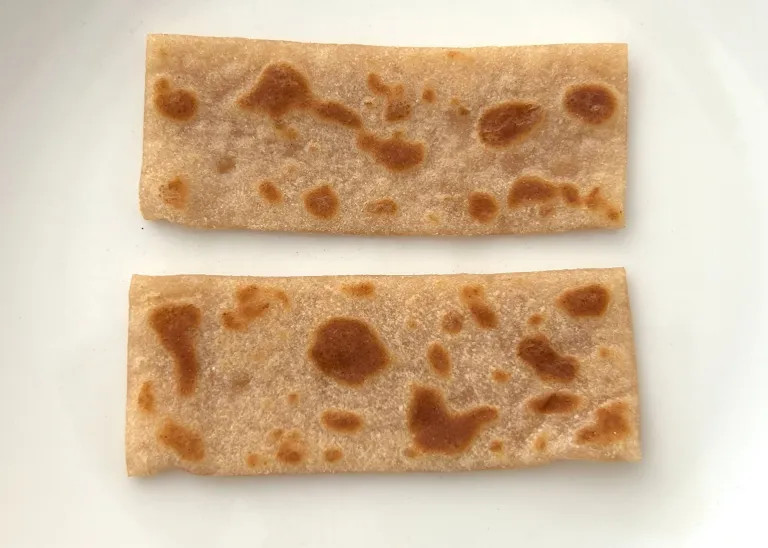
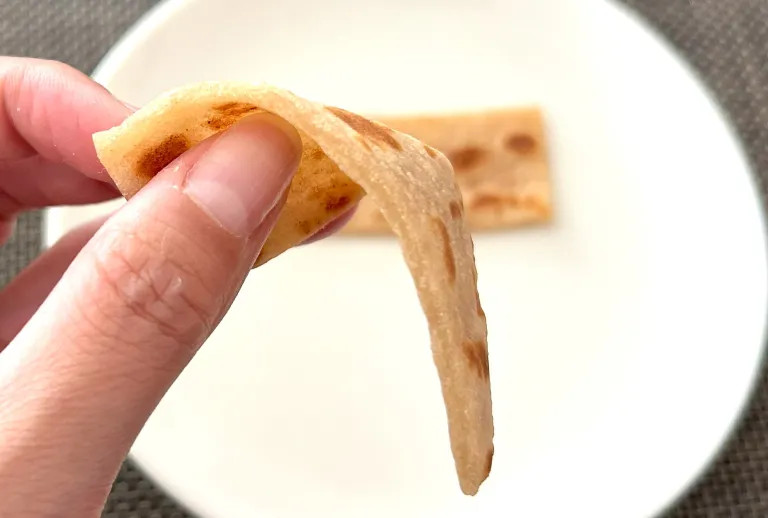
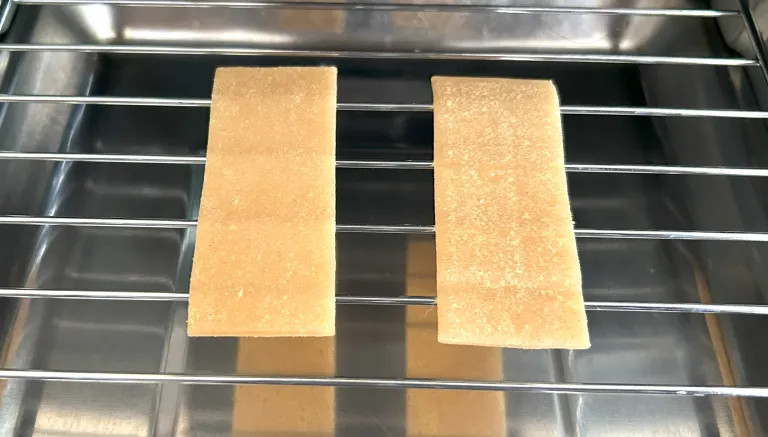
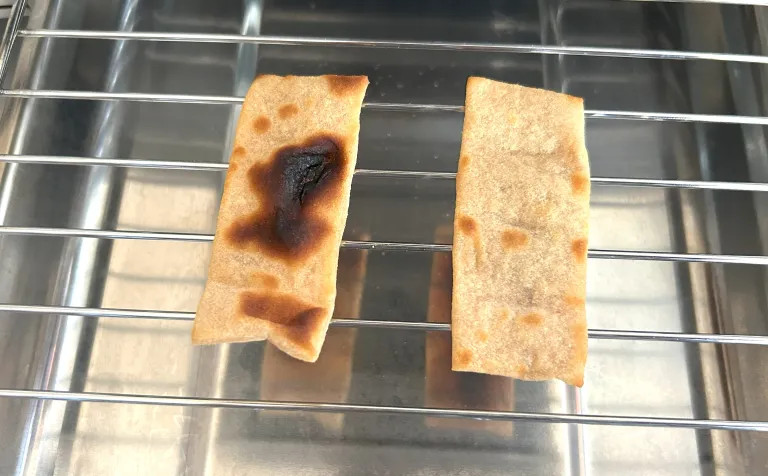

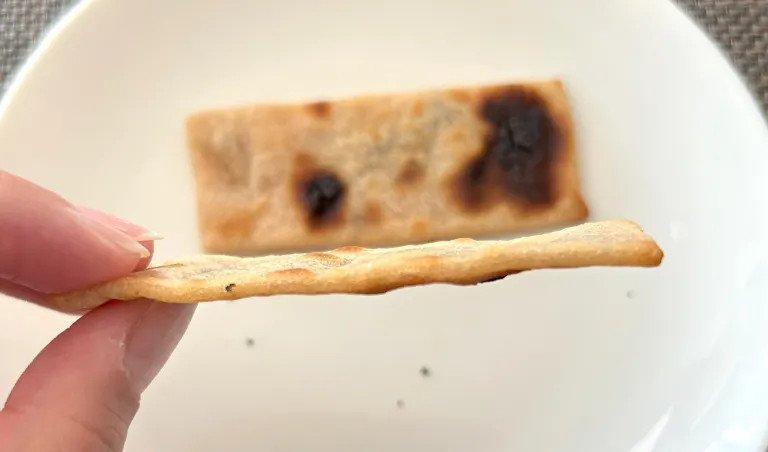
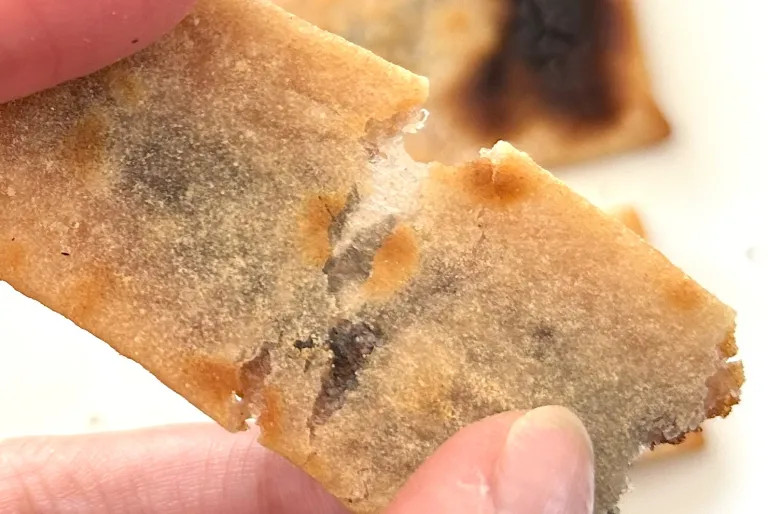
 Crepe made with Kyoto sweets and green tea is the perfect treat after a day of temple hopping
Crepe made with Kyoto sweets and green tea is the perfect treat after a day of temple hopping Pikachu and Kyoto candy maker team up for confectionary collaboration centuries in the making
Pikachu and Kyoto candy maker team up for confectionary collaboration centuries in the making Japan’s hardest rice crackers, snacks of the shinobi, go soft, so do they have a reason to exist?
Japan’s hardest rice crackers, snacks of the shinobi, go soft, so do they have a reason to exist? We made pan-fried and baked mini apple pies using gyoza dumpling wrappers【SoraKitchen】
We made pan-fried and baked mini apple pies using gyoza dumpling wrappers【SoraKitchen】 Pepsi Japan to release its “most refreshing” cola ever
Pepsi Japan to release its “most refreshing” cola ever Foreigner’s request for help in Tokyo makes us sad for the state of society
Foreigner’s request for help in Tokyo makes us sad for the state of society Seaside scenery, history, and so many desserts on Yokohama’s Akai Kutsu【Japan Loop Buses】
Seaside scenery, history, and so many desserts on Yokohama’s Akai Kutsu【Japan Loop Buses】 Japanese city loses residents’ personal data, which was on paper being transported on a windy day
Japanese city loses residents’ personal data, which was on paper being transported on a windy day We tried Korea’s way-too-big King Tonkatsu Burger at Lotteria 【Taste Test】
We tried Korea’s way-too-big King Tonkatsu Burger at Lotteria 【Taste Test】 Smash Bros. director Sakurai stabs Kirby in the face, has delicious justification for it
Smash Bros. director Sakurai stabs Kirby in the face, has delicious justification for it Japan’s summertime towelket pillowcases are even better with the addition of Ghibli stars【Photos】
Japan’s summertime towelket pillowcases are even better with the addition of Ghibli stars【Photos】 Mt. Koya planning to instate visitor’s tax to cope with huge tourist numbers
Mt. Koya planning to instate visitor’s tax to cope with huge tourist numbers “Hey, how’d you get our personal information?” we ask a Japanese telemarketer
“Hey, how’d you get our personal information?” we ask a Japanese telemarketer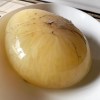 You COULD eat a terrifying octopus egg in Japan, but SHOULD you? Let’s find out!【Taste test】
You COULD eat a terrifying octopus egg in Japan, but SHOULD you? Let’s find out!【Taste test】 Harajuku Station’s beautiful old wooden building is set to return, with a new complex around it
Harajuku Station’s beautiful old wooden building is set to return, with a new complex around it McDonald’s new Happy Meals offer up cute and practical Sanrio lifestyle goods
McDonald’s new Happy Meals offer up cute and practical Sanrio lifestyle goods Japanese ramen restaurants under pressure from new yen banknotes
Japanese ramen restaurants under pressure from new yen banknotes French Fries Bread in Tokyo’s Shibuya becomes a hit on social media
French Fries Bread in Tokyo’s Shibuya becomes a hit on social media Studio Ghibli releases new action figures featuring Nausicaä of the Valley of the Wind characters
Studio Ghibli releases new action figures featuring Nausicaä of the Valley of the Wind characters Red light district sushi restaurant in Tokyo shows us just how wrong we were about it
Red light district sushi restaurant in Tokyo shows us just how wrong we were about it New private rooms on Tokaido Shinkansen change the way we travel from Tokyo to Kyoto
New private rooms on Tokaido Shinkansen change the way we travel from Tokyo to Kyoto Tokyo Tsukiji fish market site to be redeveloped with 50,000-seat stadium, hotel, shopping center
Tokyo Tsukiji fish market site to be redeveloped with 50,000-seat stadium, hotel, shopping center Beautiful Ghibli sealing wax kits let you create accessories and elegant letter decorations【Pics】
Beautiful Ghibli sealing wax kits let you create accessories and elegant letter decorations【Pics】 Studio Ghibli releases Kiki’s Delivery Service chocolate cake pouches in Japan
Studio Ghibli releases Kiki’s Delivery Service chocolate cake pouches in Japan New definition of “Japanese whiskey” goes into effect to prevent fakes from fooling overseas buyers
New definition of “Japanese whiskey” goes into effect to prevent fakes from fooling overseas buyers Our Japanese reporter visits Costco in the U.S., finds super American and very Japanese things
Our Japanese reporter visits Costco in the U.S., finds super American and very Japanese things All-you-can-drink Starbucks and amazing views part of Tokyo’s new 170 meter-high sky lounge
All-you-can-drink Starbucks and amazing views part of Tokyo’s new 170 meter-high sky lounge More foreign tourists than ever before in history visited Japan last month
More foreign tourists than ever before in history visited Japan last month New Pokémon cakes let you eat your way through Pikachu and all the Eevee evolutions
New Pokémon cakes let you eat your way through Pikachu and all the Eevee evolutions Disney princesses get official manga makeovers for Manga Princess Cafe opening in Tokyo
Disney princesses get official manga makeovers for Manga Princess Cafe opening in Tokyo Sales of Japan’s most convenient train ticket/shopping payment cards suspended indefinitely
Sales of Japan’s most convenient train ticket/shopping payment cards suspended indefinitely Sold-out Studio Ghibli desktop humidifiers are back so Totoro can help you through the dry season
Sold-out Studio Ghibli desktop humidifiers are back so Totoro can help you through the dry season Japanese government to make first change to romanization spelling rules since the 1950s
Japanese government to make first change to romanization spelling rules since the 1950s Ghibli founders Toshio Suzuki and Hayao Miyazaki contribute to Japanese whisky Totoro label design
Ghibli founders Toshio Suzuki and Hayao Miyazaki contribute to Japanese whisky Totoro label design Doraemon found buried at sea as scene from 1993 anime becomes real life【Photos】
Doraemon found buried at sea as scene from 1993 anime becomes real life【Photos】 Tokyo’s most famous Starbucks is closed
Tokyo’s most famous Starbucks is closed One Piece characters’ nationalities revealed, but fans have mixed opinions
One Piece characters’ nationalities revealed, but fans have mixed opinions We asked a Uniqlo employee what four things we should buy and their suggestions didn’t disappoint
We asked a Uniqlo employee what four things we should buy and their suggestions didn’t disappoint Princesses, fruits, and blacksmiths: Study reveals the 30 most unusual family names in Japan
Princesses, fruits, and blacksmiths: Study reveals the 30 most unusual family names in Japan Meet the Mega Bento, a Japanese meal that’s heavier than a newborn baby
Meet the Mega Bento, a Japanese meal that’s heavier than a newborn baby This ramen restaurant has no name, is one of the best hidden finds in Japan
This ramen restaurant has no name, is one of the best hidden finds in Japan Kyoto cafe shows us the beauty of minerals through its breathtaking dishes
Kyoto cafe shows us the beauty of minerals through its breathtaking dishes Kyoto curry bread comes with a very special filling
Kyoto curry bread comes with a very special filling We tried cricket udon made with 100 crickets, and then we added some more crickets
We tried cricket udon made with 100 crickets, and then we added some more crickets Which conveyor belt sushi place’s chawanmushi egg custard is the best? We investigate【Taste Test】
Which conveyor belt sushi place’s chawanmushi egg custard is the best? We investigate【Taste Test】 Onigiri jewellery from Japan lets you wear your love of Japanese food on your fingers
Onigiri jewellery from Japan lets you wear your love of Japanese food on your fingers Japanese whisky in a can: Comparing the new Suntory Hakushu Premium Highball to a homemade one
Japanese whisky in a can: Comparing the new Suntory Hakushu Premium Highball to a homemade one Weird Japanese vending machine find gives us unique sweet potato sweets
Weird Japanese vending machine find gives us unique sweet potato sweets Asahi Super Dry’s draft beer in a can, the Nama Jockey Can, is here【Taste test】
Asahi Super Dry’s draft beer in a can, the Nama Jockey Can, is here【Taste test】 Starbucks Japan reveals new Sakura Frappuccino for 2022
Starbucks Japan reveals new Sakura Frappuccino for 2022 Japan’s new Melon Pan slices: Simply pop them on bread and heat and eat
Japan’s new Melon Pan slices: Simply pop them on bread and heat and eat The 5 best Japanese bento to buy at Kyoto Station
The 5 best Japanese bento to buy at Kyoto Station How to make okonomiyaki at home【SoraKitchen】
How to make okonomiyaki at home【SoraKitchen】 Japan super budget dining – What’s the best way to spend 1,000 yen at Family Mart?
Japan super budget dining – What’s the best way to spend 1,000 yen at Family Mart?
Leave a Reply